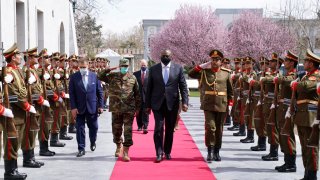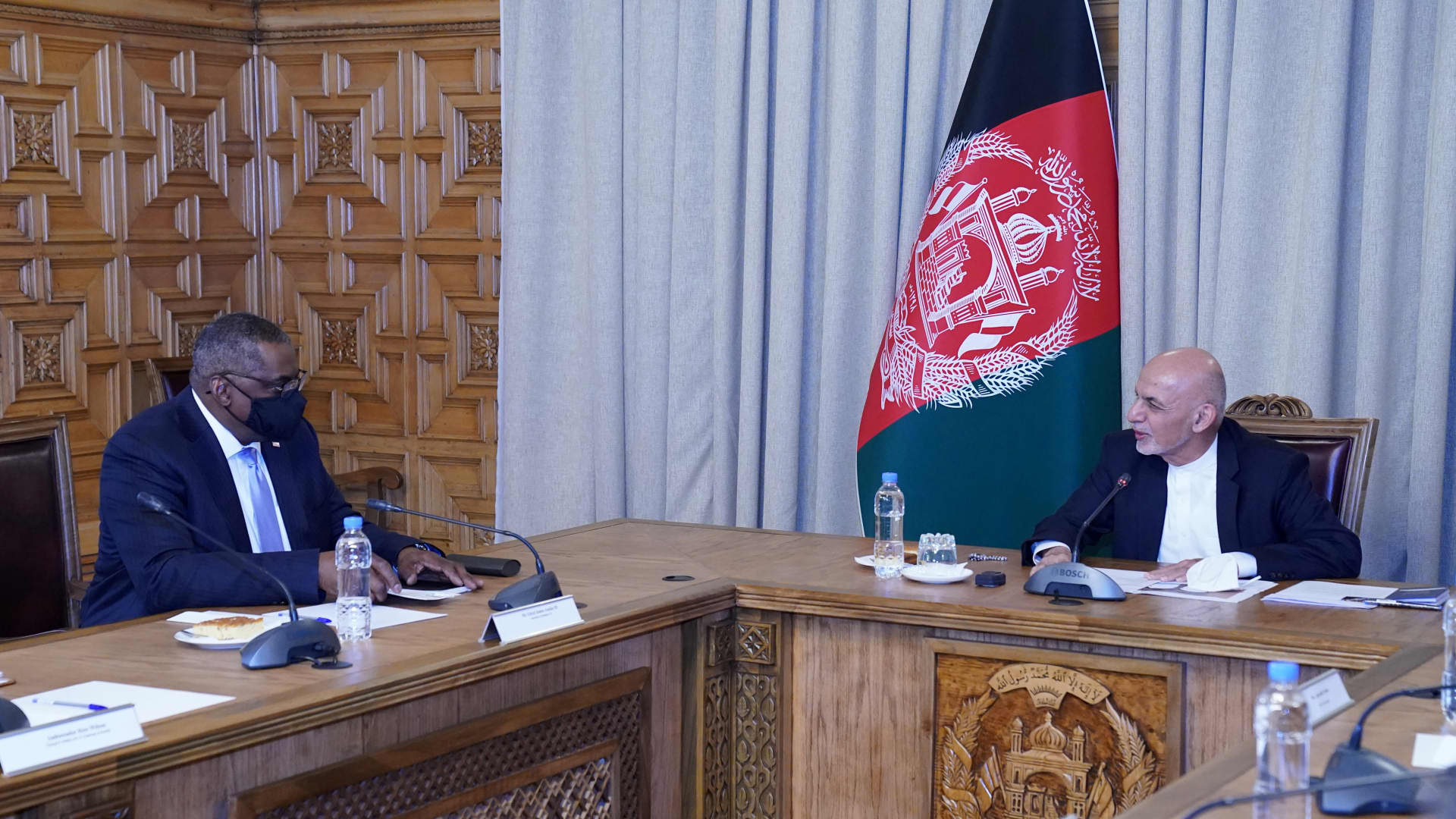
- Secretary of Defense Lloyd Austin traveled to Afghanistan on Sunday as Washington considers a potential end to America's longest war.
- There are about 2,500 U.S. troops currently in the country.
- The Biden administration has yet to announce its next steps forward in Afghanistan.

WASHINGTON – Secretary of Defense Lloyd Austin traveled to Afghanistan on Sunday to meet with the nation's leader, as Washington considers a potential end to America's longest war.
The trip, which makes Austin the first Biden Cabinet-level official to visit the war-torn country, comes 40 days ahead of a U.S. troop withdrawal deadline.
In February 2020, the United States brokered a deal with the Taliban that would usher in a permanent cease-fire and reduced further the U.S. military's footprint from approximately 13,000 troops to 8,600 by mid-July last year.
By May 2021, all foreign forces would leave Afghanistan, according to the deal. There are about 2,500 U.S. troops currently in the country.
The Biden administration has yet to announce its next steps forward in Afghanistan.
Money Report
The collective wars in Afghanistan, Iraq and Syria have cost U.S. taxpayers more than $1.57 trillion since Sept. 11, 2001, according to a Defense Department report.
The current U.S. military operations, designated Operation Freedom's Sentinel in Afghanistan, Operation Inherent Resolve in Syria and Iraq, and Operation Noble Eagle for homeland security missions in the U.S. and Canada, have accounted for $265.7 billion of that sum.
Operation Enduring Freedom in Afghanistan, which began in October 2001 and formally ended in December 2014, cost taxpayers $578.7 billion.
Of the three current operations, Freedom's Sentinel takes the lion's share of costs at $197.3 billion, followed by Inherent Resolve at $40.5 billion and Noble Eagle at $27.9 billion.
According to the report, the money goes toward training, equipment, maintenance as well as food, clothing, medical services and pay for troops.
Last month, the world's most powerful military alliance met to discuss an array of challenges facing the 30-member group. High on the agenda was the path forward in Afghanistan. NATO joined the international security effort in Afghanistan in 2003 and currently has more than 7,000 troops in the country.
NATO Secretary-General Jens Stoltenberg said the alliance will continue to assess the situation on the ground in Afghanistan.
"Our aim is to make sure that we have a lasting political agreement that can make it possible for us to leave in a way that doesn't undermine our main goal and that is to prevent Afghanistan from becoming once again a safe haven [for terrorists]," Stoltenberg said.
"The majority of the troops are from European allies and partner countries. We will do what is necessary to make sure that our troops are secure," he said when asked if the alliance was prepared for violence if the agreement with the Taliban is broken.
Austin told reporters on the heels of the NATO meeting that the U.S. troop drawdown in Afghanistan would be contingent on a reduction of violence in the country.
"The violence must decrease, now," Austin said, in his first press briefing with reporters. "I told our allies that no matter what the outcome of our review, the United States will not undertake a hasty or disorderly withdrawal from Afghanistan," he said, referring to the virtual NATO meetings.
"There will be no surprises. We will consult each other, consult together and decide together and act together," Austin said of the NATO-led mission.






